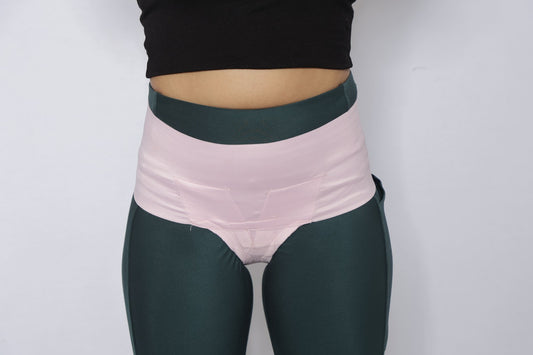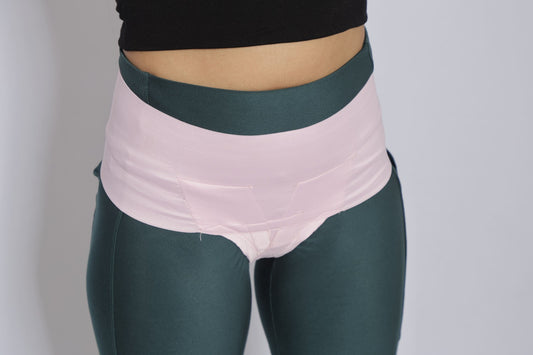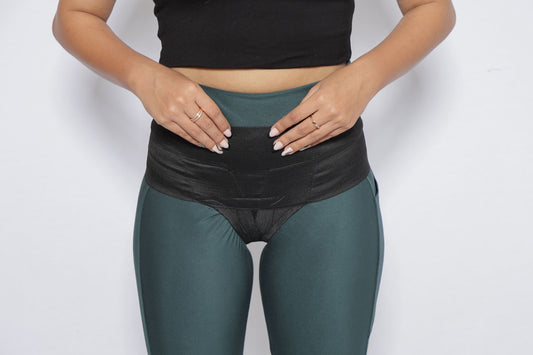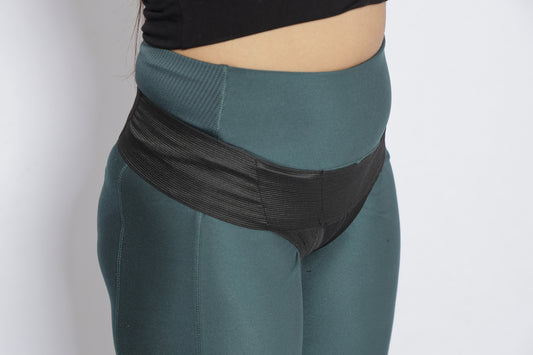About us
How Femme Jock Works?
Femme jock comes handy and makes it easy for you to both prevent and/or recover from issues without a pills, injections and/or surgery.
What does a prolapse mean?
Over 20 million women worldwide suffer from pelvic organ prolapse (POP), which requires 200,000 surgeries and other procedures to repair each year in the US. What is organic pelvic prolapse? Prolapsing, or "falling out of place," from their usual, healthy positions are the pelvic organs. Organs may prolapse after childbirth, after a hysterectomy, or even for no apparent cause..
Age, pregnancy, delivery, obesity, persistent coughing, and underlying medical disorders that weaken the supporting components of the afflicted organ or tissue are only a few of the causes of prolapse.
Depending on the prolepses' degree and the location of the body affected, there are several treatment options available, such as dietary changes, physical therapy, medication, or surgery.
- Experiencing a sensation in your pelvis while washing or performing other tasks.
- When you spend a lot of time standing or sitting, you may have a pressing sensation.
- Ache or discomfort in the lower abdomen or pelvis.
- Urge to urinate frequently or frequently.
- Difficulty emptying the intestines or constipation.
- Vaginal bleeding or spotting The symptoms could get worse in the late afternoon or evening.
All you need to know about Pelvic Floor Muscles!
The Pelvic Floor Muscles (PFMs) are the hammock shaped muscles which extends from the base of spine (coccyx) upto the pubic symphysis.
They are spanned across the whole pelvic outlet.
PFMs are interconnected and work together as a unit and collectively helps with, urine control, supporting pelvic organs, provide core stability, and to enhance intimate health.
Too loose or weak PFM can lead to conditions like urine incontinence, vaginal laxity, pelvic organ prolapse, fecal incontinence and female sexual dysfunctions.
Too loose or weak PFM can lead to Hypotonus Pelvic Floor Dysfunction.
If the muscles are too much in spasm and pain, then they lead to Hypertonus Pelvic Floor Dysfunction.
Too much spasm and pain in the pelvic floor muscles can lead to conditions like Vaginismus (inability to have a vaginal penetration, it can be an asexual penetration like the penetration of tampon, menstrual cup, finger etc. or a sexual penetration during sexual intercourse).
Dyspareunia (painful vaginal penetration, when the sexual penetration is possible but it is accompanied with pain, tightness or discomfort it). Hypertonic pelvic floor muscles can also lead to constipation, urinary disturbances (painful urination, burning urination, incomplete urination etc), chronic pelvic pain etc.
Pelvic Floor muscles dysfunction is very common issue faced by females. It is said that almost 80% female suffers from vaginal laxity after pregnancy and childbirth.
Vaginal laxity can be associated with urine leakage (involuntary loss of urine), pelvic organ prolapse (descent of pelvic organs from their normal position into the vaginal cavity), and female sexual dysfunction (reduced desire, arousal or orgasm).
Urine leakage can mainly be classified as following:
Stress Urinary Incontinence – Leakage of urine during activities increasing the intraabdominal pressue like coughing, laughing, jumping, exercising etc.
Urge Urinary Incontinence – Inability to hold the urine for long time. Need to rush to the bathroom.
Mixed Urinary Incontinence – Symptoms of stress urinary incontinence and urge urinary incontinence are present.
Overflow Urinary Incontinence – Obstruction in the urethra or over distended bladder can lead to constant dribbling of urine.
Pelvic Organ Prolapse, descent of the pelvic content into the vaginal cavity. The pelvic floor muscles can become weak or loose due to pregnancy, childbirth, obesity, ageing, and menopause, etc. Weak pelvic floor muscles means weak support to the pelvic organs. This can lead to cystocele, rectocele, Enterocele, uterine prolapse, vaginal vault prolapse.
Cystocele – Prolapse of anterior wall of vagina (leading to prolapse of urinary bladder). It can cause urine retention, leakage of urine during sexual activity, frequent urination etc.
Rectocele – Prolapse of posterior wall of vagina (leading to prolapse of rectum). It can cause constipation, vaginal pressure, feeling lump in vagina during defecation etc.
Enterocele – Prolapse of intestinal content, commonly occurs after hysterectomy
Uterine prolapse – prolapse of middle compartment (cervix and uterus displaces downwards into the vaginal cavity) It can lead to recurrent cervical infection, frequent spotting or discharge, difficulty in urination and defecation etc.
Vaginal vault prolapse – the top (wall of vaginal) falls out, common after hysterectomy.
The common symptoms of pelvic organ prolapse are
- Vaginal pressure
- Dyspareunia
- Reduced sexual sensation
Bulge in the vagina
Need of splinting during urination and defecation
Timely strengthening of pelvic floor muscles can help to manage pelvic organ prolapse.
How can FemmeJock be useful?
A high-end orthotic product called Femme Jock pelvic support is intended to enhance women's pelvic health. The fundamental component of this product is its distinct, ergonomic design, which offers the pelvic area outstanding comfort and stability.
Our use of environmentally friendly products and our attempts to reduce waste during production show our dedication to sustainability.
The Femme Jock pelvic support is an efficient way for women to prevent and manage problems brought on by a weak pelvic floor, and its distinctive shape makes it easy to use.
Our Products
Free Shipping
You will love at great low prices
Flexible Payment
Pay with Multiple Credit Cards
14 Day Returns
Within 30 days for an exchange.
Shop
Stay in touch
Subscribe to get special offers, free giveaways
2023 © The Femme Jock. All Rights Reserved.



























